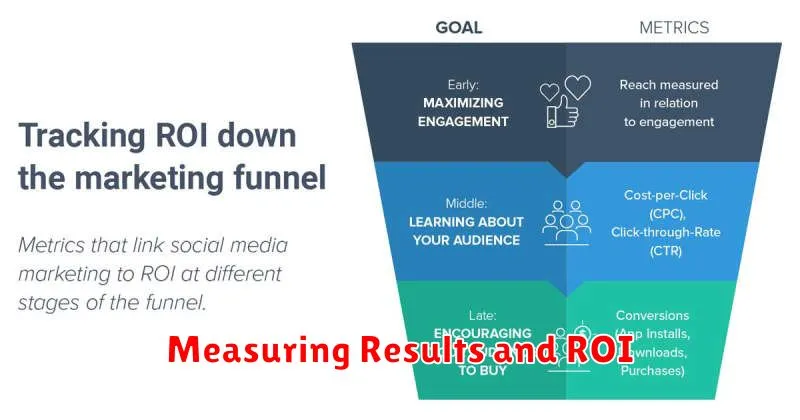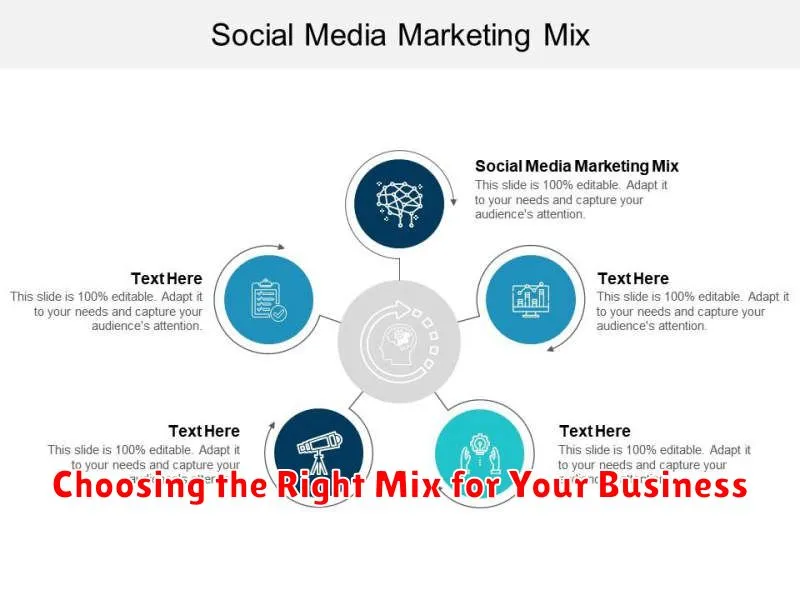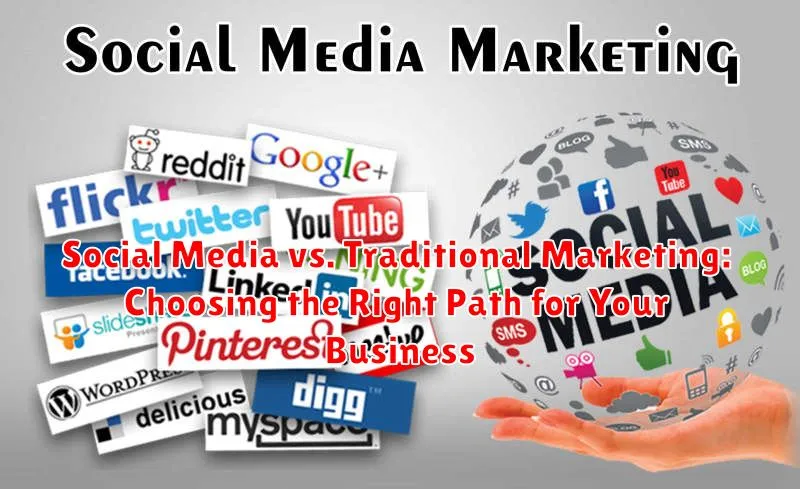In today’s interconnected world, businesses face a crucial decision: where to invest their marketing efforts. The battle between social media marketing and traditional marketing continues to rage, with each approach offering unique advantages and disadvantages. Understanding these nuances is paramount for achieving business objectives. This article delves into the core differences between social media marketing and traditional marketing, offering insights to help businesses choose the right path for their specific needs. We will explore key considerations such as target audience, budget, and desired return on investment (ROI) to equip you with the knowledge necessary to make informed decisions regarding your marketing strategy.
Choosing between social media marketing and traditional marketing is not an either/or proposition. Many successful businesses employ a combination of both, creating an integrated marketing strategy that leverages the strengths of each. This article will examine the potential benefits of an integrated approach, helping you discern whether a blended strategy is the right path for your business. We will analyze how social media marketing and traditional marketing can complement one another, maximizing reach and impact while remaining cost-effective and aligned with your overall business goals. By understanding the interplay between these two powerful forces in the marketing landscape, you can develop a marketing strategy that drives growth and achieves lasting success.
Understanding the Core Differences
At its core, the distinction between social media and traditional marketing lies in the communication approach. Traditional marketing employs a one-way broadcast model, pushing messages out to a broad audience via channels like print, television, or radio. It often relies on interrupting the audience’s experience to deliver the message.
In contrast, social media marketing fosters a two-way dialogue. It prioritizes building relationships and engaging with audiences in real-time. Instead of interrupting, it aims to become part of the ongoing online conversation, offering value and building community.
Another key difference lies in control. Traditional marketing offers businesses significant control over their message and its delivery. With social media, the audience plays a more active role, sharing, commenting, and shaping the narrative around a brand.
Finally, measurement differs significantly. Traditional marketing often relies on estimated reach and impact, while social media offers detailed analytics, enabling businesses to track engagement, reach, and conversions with greater precision.
Reach and Targeting: Exploring the Landscape
Reach, the extent of your audience exposure, differs significantly between social media and traditional marketing. Traditional methods, like print or television, often cast a wider net, potentially reaching a massive, though often less defined, audience. Social media, conversely, allows for precise targeting based on demographics, interests, and online behavior. This granular control enables you to pinpoint specific consumer segments, maximizing the impact of your marketing efforts on your ideal customer profile.
Targeting capabilities are a key differentiator. While traditional marketing may offer some demographic targeting through specific publications or broadcast channels, social media platforms provide an unparalleled level of precision. You can target users based on their declared interests, past purchases, online activity, and even their connections with other users. This laser-focused approach significantly increases the probability of reaching individuals genuinely interested in your product or service.
Engagement and Interaction
A key differentiator between social media and traditional marketing lies in the level of engagement and interaction they offer. Social media thrives on two-way communication, fostering direct dialogue between businesses and their audience. This allows for real-time feedback, relationship building, and community creation.
Traditional marketing methods, such as print or television advertising, often provide a more one-way communication flow. While these methods can reach a wide audience, the opportunity for direct interaction and immediate feedback is limited.
Social media platforms offer diverse avenues for engagement, including comments, shares, likes, and direct messaging. These features facilitate active participation and foster a sense of connection between the brand and consumer.
Traditional methods, while lacking in immediate interaction, can still achieve engagement through techniques like customer surveys or promotional events. However, these methods typically require more time and resources to gather feedback and foster relationships.
Cost-Effectiveness: Budgeting for Success
A critical distinction between social media and traditional marketing lies in their cost structures. Social media marketing often presents a lower barrier to entry. Organic posting on platforms like Facebook, Instagram, and Twitter is generally free, allowing businesses to reach a wide audience with minimal financial investment. Paid social media campaigns offer granular control over budgets, enabling businesses to scale their spending according to their specific needs and goals.
Traditional marketing methods, such as print advertising, television commercials, and radio spots, typically require a more substantial upfront investment. These channels often involve production costs, placement fees, and ongoing maintenance expenses. While they can offer significant reach, the associated costs can be prohibitive for businesses with limited budgets.
Evaluating cost-effectiveness involves considering the return on investment (ROI) for each channel. While social media marketing can be more accessible initially, achieving significant results through paid campaigns can also accrue substantial costs. Traditional marketing, despite higher upfront costs, can yield a strong ROI if strategically targeted and executed effectively.
Measuring Results and ROI

Measuring the effectiveness of your marketing efforts is crucial for understanding what’s working and what’s not. Return on investment (ROI) is a key metric that helps businesses determine the profitability of their campaigns. However, measuring ROI can differ significantly between social media and traditional marketing.
With social media, various metrics are readily available, including engagement (likes, shares, comments), reach (impressions, followers), and website traffic. Analytics platforms provide in-depth data, allowing for precise tracking of campaign performance and audience behavior. Calculating ROI often involves attributing conversions (sales, leads) to specific social media activities.
Traditional marketing presents different measurement challenges. While methods like tracking coupon redemptions and surveys exist, attributing results directly to a specific ad or campaign can be more complex. Calculating ROI may involve estimating the impact of a campaign on overall sales or brand awareness, which can be less precise than digital metrics.
Choosing the Right Mix for Your Business

There’s no one-size-fits-all approach when it comes to marketing. The ideal strategy is often a blend of social media and traditional methods, tailored to your specific business needs and target audience. Integrating these two approaches can create a synergistic effect, maximizing your reach and impact.
Consider your target demographic. Where do they spend their time? If you’re targeting a younger audience, a social media focus might be more effective. For older demographics, traditional methods like print advertising or direct mail could be more impactful. Analyze your industry as well. Certain industries lend themselves better to specific channels.
Budget allocation is another crucial factor. Determine how much you can invest in each area and prioritize based on potential ROI. Experimentation is key. Start with a balanced approach, track your results, and adjust your strategy based on what delivers the best outcomes for your business.
Long-Term Strategies and Sustainability
Building a sustainable marketing approach requires considering the long-term implications of your chosen strategies. Both social media and traditional marketing channels evolve, and your business needs to adapt accordingly.
For social media, this means staying ahead of algorithm changes, platform updates, and emerging trends. A sustainable social media strategy involves consistent content creation, community building, and adapting to new features and best practices. Diversifying your presence across multiple platforms can mitigate the risk of relying too heavily on a single platform.
Traditional marketing requires a long-term vision as well. Building brand recognition through established channels like print or broadcast necessitates consistent messaging and a deep understanding of your target audience. While these methods may offer enduring value, adapting to evolving consumer behavior is crucial for long-term success.
Ultimately, a sustainable strategy involves a blend of adaptability and consistency. Regularly evaluating your marketing performance, staying informed about industry trends, and being willing to adjust your approach will help ensure long-term growth and effectiveness.

